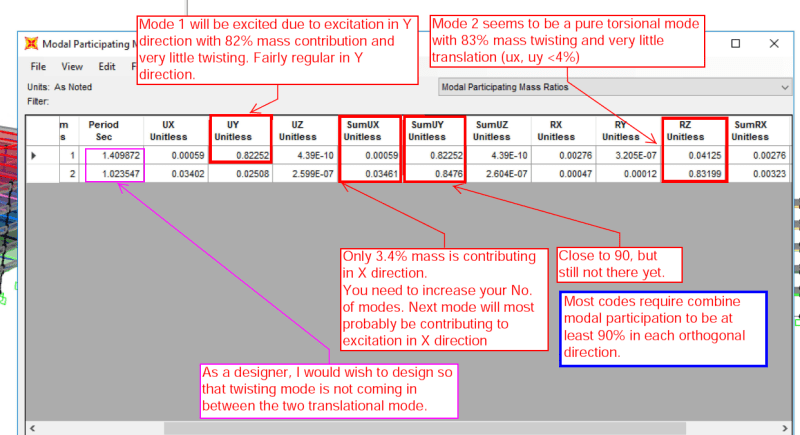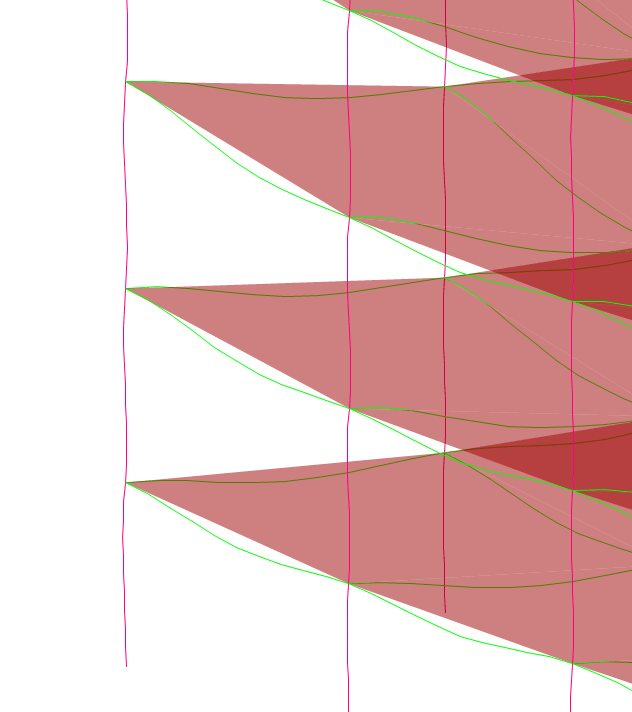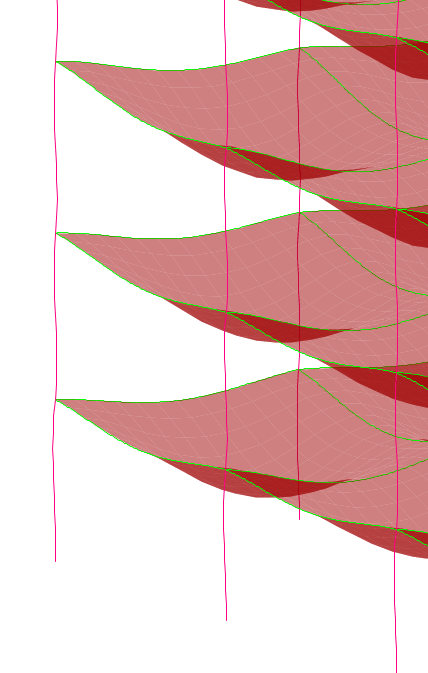OP said:
The shell was constrained to the beam column joints. It was semi rigid, two way.
Okay, but have you at least assigned an auto mesh property? Because from the deformed shape, it doesn't appear to be meshed at all.
Do you see the difference between the deformation of a meshed and no meshed slab in the pictures attached below? Beam and slab are deforming independent of each other in the first one. What do you thin which behavior is close to the reality? If you do not meshed a shell element, any load on the area will go directly to the points supporting its 4 nodes rather than following the intended path i.e. shell to beams to columns to foundations.
OP said:
The grey areas are the barrier walls]
I think as per ASCE requirement, barrier walls should be design to resist a horizontal load of a certain magnitude, which also, should have a clear load path to the supporting slab or beam.
If the wall will be cast in second stage, I would assign its load on supporting frame instead of modelling it as a shell. As for laterally restraining the barrier wall on columns, I am not sure what I would do. I'll need to do a little bit of research on the barrier wall, before I decide. Although, if you provide a snug tight connection with the frame, it will surely increase the shear demand on periphery columns than the other columns in the story.
As for your mode shapes, you need to increase the torsional stiffness of your structure to kick the pure twisting mode out of the midst of the pure translational mode shapes.
One more thing the time period of mode shape 2 and 3 are too close for my liking. Not a good idea to have the peak response of two major contributing mode shapes so close to each other. During an earthquake, ground shaking change directions rapidly in violent upward downward forward backward motion. Just imagine your structure resonating at the frequency of mode 2 when ground motion switches gear and direction and now it start resonating translationally while your building was still trying to regain its footing from twisting motion.



